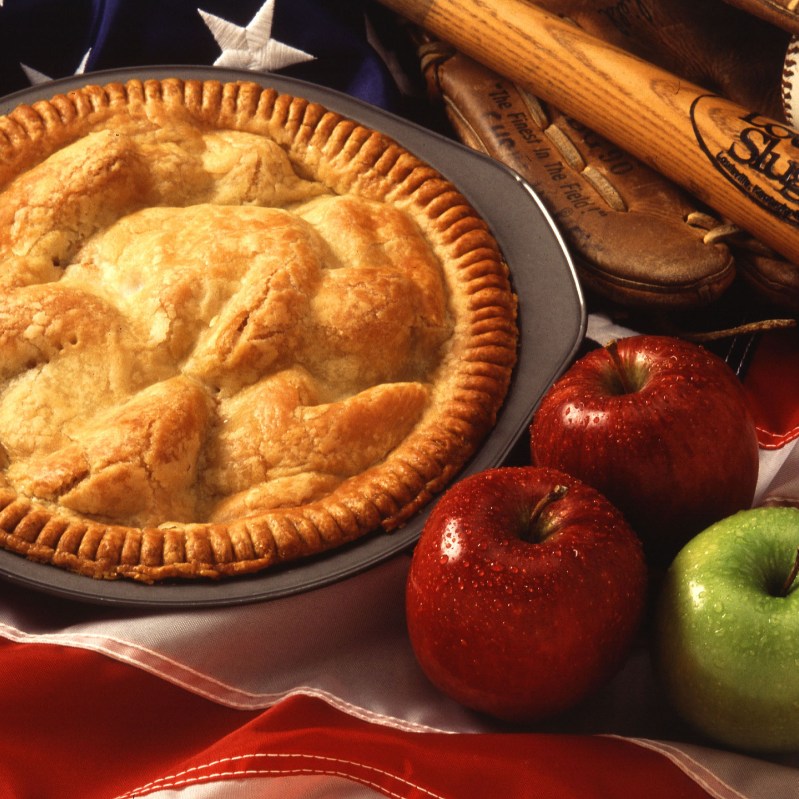Burgers, hot dogs and fries. A timeless trifecta of pure Americana, of fast food and fried fare. To the average American, these foods are symbols of comfort and nostalgia, hence their immense popularity and widespread, immediate availability throughout the nation. Whether we proudly tout or beseech our culinary reputation for all things fried and fatty, the question remains: how exactly did American “cuisine” come to be, and does it always have to be unhealthy?
As American as … apple pie?
Believe it or not, apple pie, the darling dessert of American diners, is not American in origin. Although apples originated in Asia, the first recorded apple pie recipe dates back to Bubonic-plague-era England. Despite this, apple pie eventually evolved into a classic dish so synonymous with American culture that the saying “as American as apple pie” is popularly used today. Apple pie is not alone; other faux-American classics include hot dogs (originally from Germany) and french fries (originally from Belgium).
Of course, there are a few exceptions — the beloved tater tot is and forever will be a distinctly American invention. Corn dogs, peanut butter and ranch dressing also make the cut. In fact, a common theme emerges in analyzing these innovations; with each possessing either a significant sugar or fat content, it appears that the uniting factor of American culinary innovation is simply a love for the indulgent.
Evidence from abroad corroborates this interpretation; international “western” or “American” establishments typically serve up a standard assortment of hamburgers, french fries and milkshakes. What constitutes American-style “fusion” food is usually some sort of ketchup-y creation (Japanese omurice or Filipino spaghetti, anyone?) or a carbohydrate-loaded snack (think Korean rice hot dogs or French beignets).
But are these trends in themselves enough to constitute a cuisine? While we may be known as a famously fast-food-fueled nation, the reality is that Americans have access to and mostly eat a great variety of foods beyond our own inventions. Consider, for example, the aforementioned apple pie. In spite of its sinful sugariness, the popular diner dessert still falls into this category of variable consumption alongside healthier, nutrient-packed meals like salads or seafoods.
Stirring the (melting) pot
The challenge in defining an American cuisine is further exemplified in the success of chains like Chipotle, Panda Express and even Domino’s. So many of the foods we consume daily — breakfast burritos, pizza, pasta, stir-fry — technically have foreign roots. You might not find people in China eating orange chicken on the regular, yet Panda Express’s signature dish bears the citrusy, umami notes of sweet chili — a collection of flavors unmistakably reminiscent of traditionally Asian ingredients. Thus, much like the country’s cultural heritage, American cuisine can be perhaps best understood as a melting pot of sorts, a product of the gradual adaptation of these diverse ethnic culinary influences into our own kitchens.
While this may seem like the definition of fusion food, thereby prompting theories that American cuisine itself is just another form of fusion food, the difference in fact lies in its blurry boundaries. Typical fusion food is more defined in its elements. Take, for example, the sushirrito. The ingredients are clearly meant to represent the Japanese half of the fusion, while the assembly is purportedly Mexican.
In contrast, Americanized ethnic dishes are often sprinkled with several different cultural influences. An interesting local example is clam chowder. While chowder is a French word and the soup base is indeed French in origin, it was the English who popularized it and facilitated its spread into the American colonies. Clams, however, were a later inclusion provided by Native Americans which came to replace the eels used by the early settlers. The myriad of culinary interactions behind clam chowder’s incipience is a trait shared by much of America’s trademark dishes, thus calling into question fusion food theories.
The future of fusion
Despite the fact that the staple dishes of American cuisine are arguably built upon too many layers of culinary history and ethnic modification to be considered proper fusion food, as more and more cultures are incorporated into the melting pot, the popularity of fusion cuisine — poke bowls, curry pizza, Dorito tacos, kimchi fries — only continues to grow nationwide.
What does this mean for the future of American cuisine? While it is impossible to predict which ethnically-inspired or ethnically-infused dishes will stick, perhaps within the next century, current innovations like the sushirrito will become just as common and widely-accepted as pizza has. Whatever the case, it is undeniable that the great diversity of the foods available to us here grants American cuisine a unique degree of fluidity in the flavors we have chosen and will choose to embrace.
Contact Carissa Lee at carislee ‘at’ stanford.edu.
